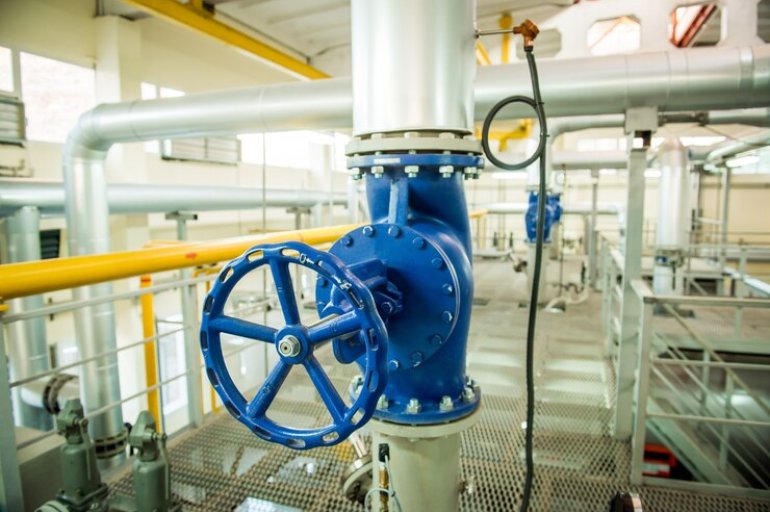Navigating the World of LNG Ball Valves: A Comprehensive Guide

Introduction:
In the intricate web of liquefied natural gas (LNG) infrastructure, ball
valves stand as crucial components, facilitating the flow and control of LNG
within vast networks. With the LNG industry burgeoning globally,
understanding the ins and outs of LNG ball valves becomes paramount. Welcome
to "The Ultimate Guide to LNG Ball Valves," your comprehensive handbook for
navigating through the complexities of these essential pieces of equipment.
Chapter 1: Understanding LNG and Its Importance
LNG, or liquefied natural gas, is a vital energy source that plays a
significant role in the global energy landscape. Produced by cooling natural
gas to extremely low temperatures, LNG reduces its volume for easier
transportation and storage, making it feasible for long-distance shipping.
Its versatility and cleaner burning properties have positioned LNG as a
crucial component in the transition towards cleaner energy sources.
Chapter 2: The Role of Ball Valves in LNG Infrastructure
Within the intricate network of LNG infrastructure, ball valves serve as
gatekeepers, regulating the flow of LNG throughout the system. These valves
are pivotal in controlling the movement of LNG at various stages, from
production and storage to transportation and distribution. Their reliability
and efficiency are crucial in ensuring the safety and smooth operation of
LNG facilities.
Chapter 3: Types of LNG Ball Valves
LNG ball valves come in various types, each designed to fulfill specific
functions within the LNG infrastructure. Some common types include:
1. Trunnion-mounted ball valves: These valves feature a supported ball that
reduces friction during operation, making them ideal for high-pressure
applications.
2. Floating ball valves: With the ball floating within the valve body, these
valves offer flexibility and tight sealing capabilities, making them
suitable for low-pressure applications.
3. Cryogenic ball valves: Designed to withstand extreme temperatures,
cryogenic ball valves are crucial in LNG applications where temperatures
plummet to ultra-low levels.
4. Top-entry ball valves: These valves allow for easy maintenance by
providing access to internal components without removing the valve from the
pipeline, reducing downtime and maintenance costs.
Chapter 4: Key Considerations When Selecting LNG Ball Valves
Choosing the right LNG ball valve requires careful consideration of various
factors to ensure optimal performance and safety. Some essential
considerations include:
1. Material compatibility: Selecting materials compatible with LNG and its
cryogenic temperatures is crucial to prevent corrosion and ensure longevity.
2. Pressure and temperature ratings: Understanding the operating conditions,
including pressure and temperature requirements, is essential in selecting
valves that can withstand the demands of LNG applications.
3. Sealing mechanism: The sealing mechanism of ball valves, whether
soft-seated or metal-seated, affects their performance and reliability in
LNG applications.
4. Compliance with industry standards: Ensuring that LNG ball valves comply
with industry standards and regulations is paramount to guaranteeing their
reliability and safety in operation.
Chapter 5: Installation and Maintenance Best Practices
Proper installation and maintenance are essential for the efficient and safe
operation of LNG ball valves. Some best practices include:
1. Following manufacturer recommendations: Adhering to the manufacturer's
guidelines for installation, operation, and maintenance is crucial to ensure
the longevity and performance of LNG ball valves.
2. Regular inspection and testing: Conducting routine inspections and
testing of LNG ball valves helps identify potential issues early and prevent
costly downtime or accidents.
3. Training and certification: Providing proper training to personnel
responsible for installing, operating, and maintaining LNG ball valves is
essential to ensure safety and compliance with industry standards.
4. Utilizing predictive maintenance techniques: Implementing predictive
maintenance techniques, such as vibration analysis and thermal imaging, can
help identify potential issues before they escalate into costly failures.
Chapter 6: Future Trends and Innovations in LNG Ball Valve Technology
As the LNG industry continues to evolve, so does the technology surrounding
LNG ball valves. Some emerging trends and innovations include:
1. Smart valves: Integration of sensors and monitoring systems into LNG ball
valves allows for real-time monitoring of valve performance and condition,
enabling predictive maintenance and optimizing operation.
2. Advanced materials: Ongoing research and development in materials science
are leading to the development of advanced materials that offer enhanced
durability, reliability, and performance in LNG applications.
3. Remote operation and control: Advancements in automation and remote
control technologies enable operators to monitor and control LNG ball valves
remotely, improving efficiency and safety.
4. Environmental sustainability: Innovations focused on reducing emissions
and improving energy efficiency are driving the development of eco-friendly
LNG ball valve solutions, aligning with the industry's sustainability goals.
Conclusion:
In the dynamic world of LNG infrastructure, ball valves play a pivotal role
in ensuring the safe and efficient flow of liquefied natural gas. "The
Ultimate Guide to LNG Ball Valves" provides a comprehensive overview of
these critical components, from their types and selection criteria to
installation best practices and future trends. By understanding the
intricacies of LNG ball valves, stakeholders in the LNG industry can make
informed decisions to optimize performance, enhance safety, and contribute
to the sustainable future of energy. For high-quality LNG ball valves,
consider exploring the offerings from Oswal Industries Limited, a trusted
provider known for its reliability and innovation in valve technology.
With Oswal Industries Limited, you can rest assured of finding LNG ball
valves that meet your specific requirements and standards, ensuring the
smooth and efficient operation of your LNG infrastructure.
